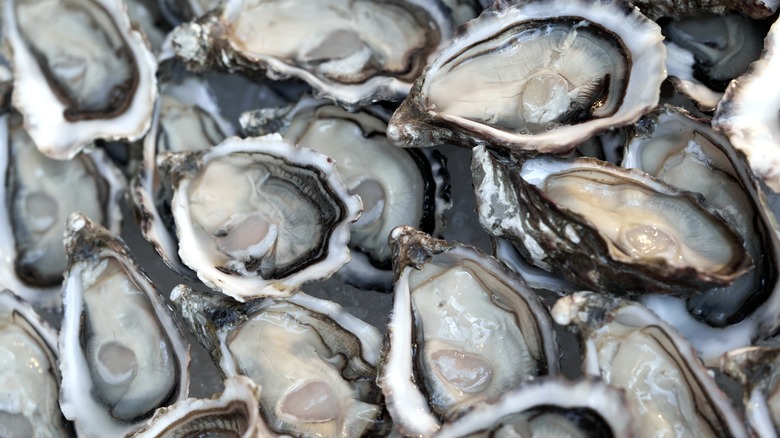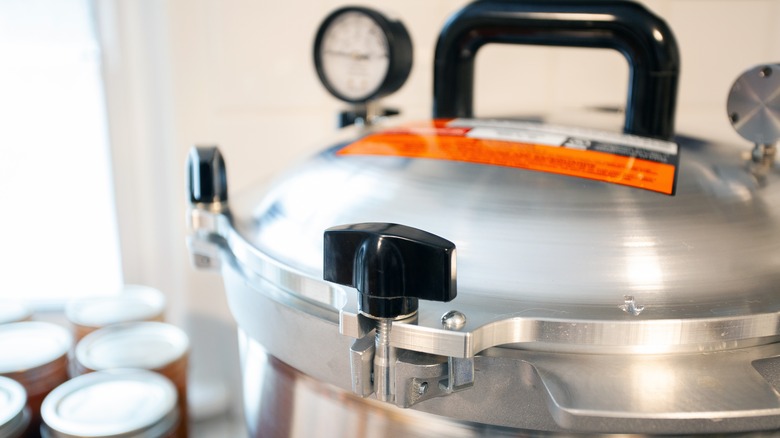The Only Type Of Oysters That Should Be Home-Canned
Home canning has many benefits. For starters, it's a great way to preserve your favorite foods and minimize food waste. But while plenty of fruits, vegetables, meats, and even seafood are safe to can at home, that doesn't mean you can use this process for everything. When it comes to oysters, there are specific requirements that your shellfish should meet for safe home canning; your oysters should always be alive, fresh, and chilled before they go in the canner. It's important to keep your oysters fresh so they don't develop harmful bacteria. To do this, you should aim to buy them on the same day you'll be canning them. Then, keep them fresh by storing them in the fridge on a bed of ice.
Once you've set up your home canning station and have all the supplies you need to work quickly, you'll bake your oysters to kill off any remaining bacteria before canning them. Cooking oysters is the only foolproof way to kill off the bacteria Vibrio. Oysters that contain this bacteria won't be different in taste, appearance, or smell. This is why it's important to bake your oysters before canning to ensure that all of them are safe to eat. Most canning guides suggest baking them for five to seven minutes at 400 degrees Fahrenheit before removing the oyster meat from the shell and washing it in a salt bath.
Properly canning your oysters
You should always use a pressure canner to can oysters. This type of canner uses steam to seal your cans and is much hotter than the boiling water of the water bath method. Several cuts of meat can be pressure canned, in addition to various types of seafood, but pressure canning is a longer process. Keep oysters in the pressure canner for 75 minutes at the calculated amount of pressure (which relates to elevation, jar size, and number of oysters) to ensure a proper seal. You can then assess if your oysters are canned correctly by checking the seals on your jars. The discs on the lids should all be curved downwards if they are properly sealed.
Whenever you decide to crack open your canned oysters, it's always wise to give the contents a once-over to ensure that they're safe to consume. If you notice that the seal is no longer sloping down and instead has a bulging hill shape, you should discard the oysters. Upon opening the can there shouldn't be a strong, offensive fishy odor; the odor should be lightly aromatic of the sea. And if you notice any mold, discard the can immediately. Finally, if at any point the taste of your canned oysters is sour or off, this can be another indication they're spoiled. It's always better to use caution when tasting home-canned products to avoid any food-borne illnesses.

